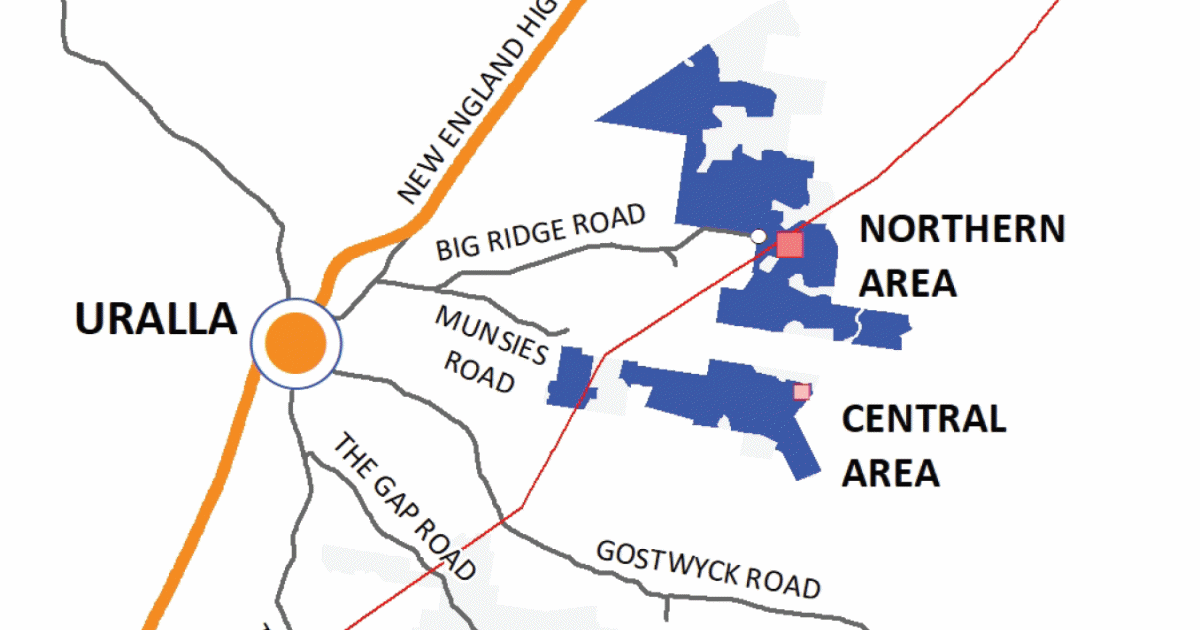
New England Solar Farm will be spread over three solar panel array areas (in blue)
New South Wales’ Independent Planning Commission yesterday conditionally approved development of a $768-million solar farm in the Northern Tablelands region.
UPC Renewables’ New England Solar Farm is to be situated around 6 kilometres east of Uralla. According to the Commission, the project will be comprised of more than 2.4 million solar panels; but that number would be based on 300W solar panels being used.
There will also be a battery storage aspect UPC describes as being “up to 200 MW (AC) two‐hour energy storage” – so I’m assuming that means up to 200MW/400MWh. New England Solar Farm would connect to TransGrid’s existing 330 kV transmission line that traverses part of the site.
In the project’s Environmental Impact Statement (EIS), UPC Renewables states New England Solar Farm will generate up to approximately 2,000 GWh of electricity annually (which seems rather optimistic based on 720MW capacity); equivalent of the electricity required to power up to 250,000 NSW households. This would translate to around 10% of all households in the state.
The project will require a peak construction workforce of up to 700 people, with a preference given to local and regional residents where possible. Among the other benefits for the local community is a contribution of $250 per megawatt capacity each year for 25 years; working out to a total of $4.5 million based on 720MW capacity.
A Controversial Project
As the project is considered a State Significant Development (SSD), approval first fell to the NSW Department of Planning, Industry Environment instead of Uralla Shire Council. The project then wound up in the hands of the Commission due to the number of public objections that were lodged during the exhibition period – 67.
The majority of concerns were in relation to compatibility of the proposed land use (currently used for grazing), visual amenity, transport and traffic management, and decommissioning and rehabilitation of the site. These are common concerns raised with the development of solar farms reasonably close to a population center (Uralla has a population of around 6,000) or in agricultural areas. In this case, the project is both.
As for the land use issues, the Commission agreed with the Department of Planning, Industry and Environment’s assessment released late last year that the development:
“would not fragment or alienate resource lands …as the land could be easily returned to agricultural land following decommissioning, and the inherent agricultural capability of the land would not be affected.”
That assessment also found there was no significant visual impact and potential traffic impacts would be minimal and short term, but the Commission has whacked on extra conditions in relation to these points.
The operational lifespan of New England Solar Farm will around 30 years, unless the facility is “re‐powered” at the end of the solar panels’ service life. UPC notes if the panels are replaced during operations, the lifespan of the project may be up to 50 years.
The full conditions of consent can be found here.
UPC Renewables says it has developed more than 3,500 MW of operating wind and solar projects in North America, Europe, Africa and Asia to date.

 RSS - Posts
RSS - Posts



Speak Your Mind